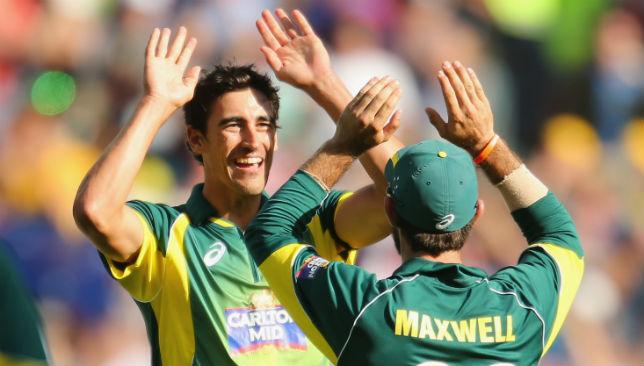
AUCKLAND, New Zealand — The group matches of the 2015 World Cup are over, and as most players like to say, the ‘business end’ of the tournament begins with the quarter-finals.
– GALLERY: Best bowlers in Cricket World Cup 2015 group stages
– GALLERY: Best batsmen in Cricket World Cup 2015 group stages
– The Biggest disappointments of Cricket World Cup 2015 group stage
From now on, there are no second chances. The equation is very clear – whichever team wins three matches on the trot, wins the biggest prize in world cricket.
Looking back on the performances in the pool stages, New Zealand, Australia, India and South Africa will be the favourites to advance to the semi-finals.
However, a closer look at the performances of the other four quarter-finalists in the Pool matches – Pakistan, Sri Lanka, Bangladesh and West Indies – shows that each one of them are capable of an upset.
The first four teams were always expected to reach the knock-out stage, and so was Sri Lanka, but the established teams like Pakistan and West Indies – both from Pool B – had to fight tooth and nail to reach the last eight.
Pakistan needed to win all their last four matches, while West Indies not only needed to beat the UAE, but also with a margin that was healthy enough to get their net run rate better than Ireland.
The biggest disappointment of the Pool stage has to be the ouster of England. They never really came to the party. A combination of bad luck – because they had a very talented squad which never fired as a unit – and the fact that they ran into Sri Lanka on a day when there top-order was just a class apart, kept them out of the knockout stage. And yet, the defeat to Bangladesh was inexplicable. They should have beaten the Tiger even on their best day, and if they did not, then they deserve ignominy of boarding an earlier flight back to Old Blighty.
In Pool B, the biggest surprise was India topping the group ahead of South Africa, and their 130-run win over the Proteas at MCG on a pitch where they should have been lame ducks to Dale Steyn, Morne Morkel and company.
India’s batting has been satisfactory, but it is their bowling and fielding that has been earning them rave reviews.
In Pool A, the battle for supremacy was won by New Zealand, but only just. The match against co-hosts Australia was really the match of the tournament so far, but it also showed that while the Kiwis may be flying at the moment, they do have several chinks in their armour.
Predictions? Here’s all the info you need to know about the @cricketworldcup finals: http://t.co/tOWJ6WXYms #cwc15 pic.twitter.com/Vij4ta4LNP
— cricket.com.au (@CricketAus) March 16, 2015
Australia, apart from that loss to New Zealand, has been the team of the tournament so far. They also had a washout against Bangladesh, but have looked like the team to beat with all departments rising admirably to the task.
None of the associate nations made it to the quarters, but that should not be held against them when determining the structure of the next World Cup. All four of them, including the UAE, showed they can be a force if given the proper exposure. Ireland were unlucky to have missed the last eight despite a gallant performance that included a win over the West indies.
Some of the things that are clear from the tournament so far are that left-armed pacemen (led by Mitchell Starc and Trent Boult) are the most effective in such playing conditions, while the success of Daniel Vettori and Ravichandran Ashwin proves there is always a place for quality spinner in the playing eleven.
And still, this has undoubtedly been a World Cup for the batsmen. There have been three scores of 400-plus and 25 scores of 300-plus in 42 matches. Their also has been five individual scores in excess of 150. Thanks to the new playing conditions, teams have scored at a rate of 5.68 per over, as compared to 5.03 in the 2011 edition.
That’s going to be the continuing trend in the knock-out stage as well.